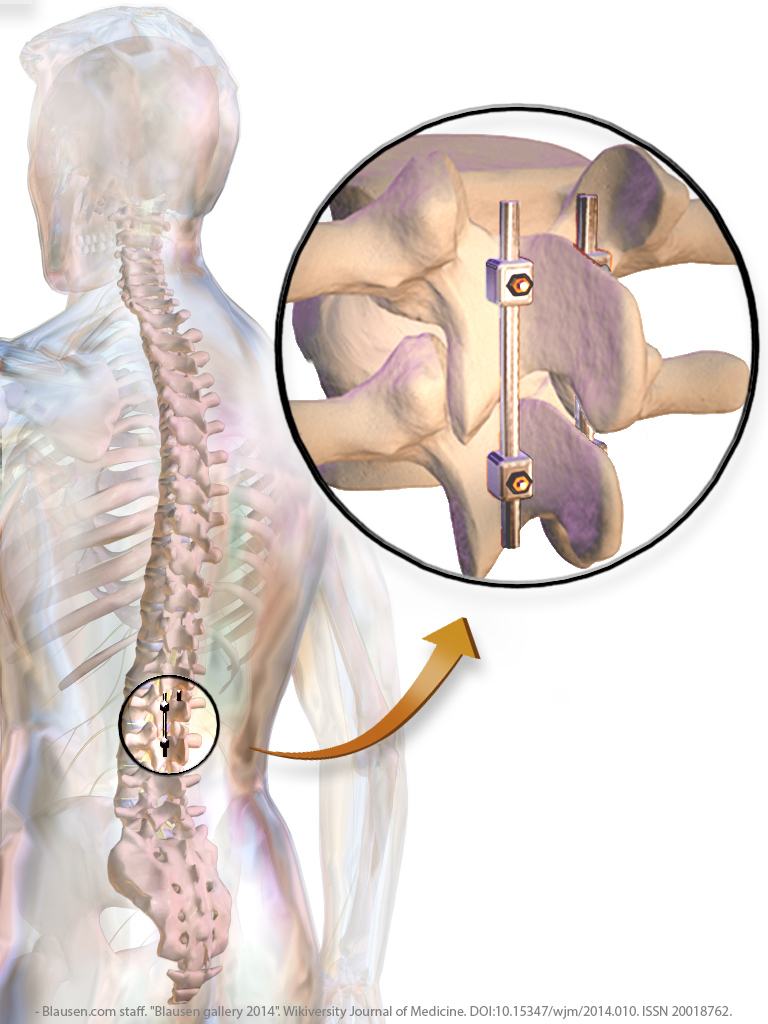What is Spine Fusion Surgery?
 Blausen.com staff. "Blausen gallery 2014". Wikiversity Journal of Medicine. DOI:10.15347/wjm/2014.010. ISSN 20018762.
Blausen.com staff. "Blausen gallery 2014". Wikiversity Journal of Medicine. DOI:10.15347/wjm/2014.010. ISSN 20018762.
Fusion refers to getting bone to grow between two adjacent bones. Spinal fusion surgery strengthens the spine by joining two or more vertebrae together with bone and instrumentation. This is usually done with screws, rods, and spacers that help provide stability. The indications for this include symptomatic instability or back pain that has been diagnosed to occur from a specific motion segment.
Over the past 13 years of my spine surgery career, it has been a rare occurrence to perform more than a two-level fusion. If your surgeon is recommending a fusion of more than two levels then the indications should be solid and diagnosis confirmed by pain mapping injections.
Spinal fusion is often recommended for diseases that cause severe back and leg pain not responsive to conservative treatments such as rest, brace, physical therapy, and steroid injections. The most common indications for a spinal fusion are degenerative disc disease (wearing out of the disc), spondylolisthesis (slippage of the spine), broken back (spinal fractures from falls or car accidents), and cancer.
Fusion for Degenerative Disc Disease
Degenerative Disc Disease is a worn-out but painful disc. Over time discs may dehydrate, collapse in height and develop annular tears thus forming a degenerated disc and possibly becoming painful.
Spondylolisthesis is an unstable condition of one vertebra slipping forward over another. The bones are no longer in alignment. The most common causes of spondylolisthesis are fracture of pars interarticularis due to adolescent injury (isthmic spondylolisthesis) and arthritis in later life (degenerative spondylolisthesis). The slippage may lead to pain, numbness, tingling and weakness.
Fusion for degenerative disc disease may be avoided by performing an endoscopic laser ablation of the annular tears. There is evidence that this treatment can be effective at reducing the back pain associated with degenerative disc disease.
